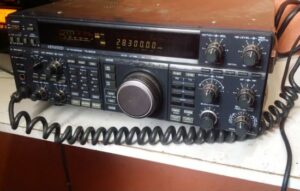The idea of carrying an entire movie theater in your pocket always seemed like a distant dream, almost a technological fantasy. However, today's reality surprises us with ingenious solutions that make that vision incredibly tangible.
Have you ever found yourself imagining being able to instantly share that hilarious video with friends on a wall, or watch the latest episode of your favorite series on a larger surface, without the hassle of bulky equipment?
Well, smartphone technology, along with smart apps, has transformed this possibility into an accessible and practical experience for everyone.
In this new article, we'll take a deeper look at this modern marvel. We'll uncover the secrets behind the apps that turn your phone into a makeshift movie projector, analyze their unique features, and guide you through the steps needed to embark on this portable cinematic experience. Get ready for a whole new perspective on digital entertainment and convenience!
The Era of Mobile Projection: A New Dimension for Your Content
See also:
- Connection: Your Phone Always Connected to Open Wi-Fi
- Powerful Sound: Transform the Volume of Your Smartphone
- Instant English: Learn for Free and Have Fun
- Turn your cell phone into your ally: Monitor your glucose now
- Enjoy Turkish soap operas from your cell phone
The practicality inherent in the idea of projecting your cell phone screen is simply liberating. In a world where mobility and the agility are increasingly valued, having the ability to instantly enlarge the content on your device opens up a range of opportunities. Whether for leisure or work, mobile projection offers a versatility unprecedented.
Imagine the following scene: an impromptu brainstorming session with your team, where ideas and visual concepts need to be shared quickly and effectively. Or perhaps a relaxed evening with friends, reviewing photos from a recent adventure on a scale that truly captures the essence of the moments. And for film and TV fans, the prospect of transforming any environment into a personalized showroom, without the investment in complex traditional equipment, is undeniably appealing.
After all, why limit yourself to the small screen of your smartphone when innovation offers us the opportunity to expand our visual horizons so easily? Mobile projection isn't just a trend; it's a natural evolution the way we consume and share information and entertainment.
The Pillar of Mobile Projection: Devices and Connections
Before we delve into the universe of applications, it is crucial to understand the essential components that make mobile projection a functional reality. In addition to smart software, the hardware and the way it connects play a fundamental role in the quality of your projection experience.
The starting point, obviously, is you smartphoneMost current models, equipped with Android or iOS operating systems, have the necessary capabilities to connect to projectors or other display devices. compatibility of your device with different connection methods (wired or wireless) will be an important factor to consider.
Next, we have the projection device itself. Although we are focusing on the cell phone's ability to send the content, we still need a receiver for display it on a large scale. This receiver can be a traditional projector.
A TV with screen mirroring capabilities or even a compact portable projector specifically designed for this purpose. The quality of the projected image (resolution, brightness, contrast) will be directly influenced by the specs from your projection device.
Finally, the connection between the cell phone and the projector is the link that allows the transmission of content. This connection can be established through physical cables (such as HDMI, using adapters if necessary) or, increasingly commonly and conveniently,
Through wireless technologies such as Wi-Fi (using protocols such as Miracast, AirPlay or specific applications) or Bluetooth (for control and, in some cases, data transmission). The ideal connection method will depend on the devices involved and the application you're using.
Applications such as Digital Bridges: Facilitating Projection
Apps are the lifeblood of transforming your phone into a functional projector. They act as digital bridges, allowing your smartphone to communicate efficiently with the projection device and stream the desired content in an optimized manner. The variety of available apps is vast, each offering a unique set of features and compatibility with different types of projectors and operating systems.
Some applications are developed by projector manufacturers to ensure seamless integration with their own products, offering exclusive features and improved performance. Others are third-party solutions, designed to be more universal and work with a wide range of devices. Selecting the ideal app will depend on your specific needs, your projector, and the type of content you plan to display.
Next, we'll explore a well-known application in this scenario, presenting it from a new perspective.
And we'll also expand our look at other popular options, detailing their distinct features and functionality to help you make the most informed decision.
Unlocking the Power of [Name of an App Similar to Epson iProjection, e.g., "ScreenBeam"]: A New Optic
Let's take as a hypothetical example the application ScreenBeam (Remember that this is just an illustrative name to keep the discussion focused on functionality, and the user can substitute it with another real application if they wish.
We can keep the focus on Epson iProjection with a new description. This type of app represents a powerful category that seeks to simplify connecting and projecting content from mobile devices to a variety of larger displays.
New Perspectives on its Features:
- Intuitive Connection: Instead of focusing only on ease, let's highlight the user experienceImagine a connection process so seamless it feels almost magical. Apps like [Similar App Name] are often designed with intuitive interfaces that guide the user step-by-step, minimizing frustration and maximizing the speed with which you can display your content. Automatically searching for compatible devices on the Wi-Fi network, or quickly scanning a QR code, are examples of how this experience can be improved.
- Expanded Content Versatility: Instead of just listing the file types, let's think about the usage scenariosImagine being able to share photos of that special moment with family gathered around the living room without having to pass your phone around. Or view an important document on a large screen for more comfortable reading. Or even transform your living room into a setting for your favorite YouTube videos. Apps like [Similar App Name] often support a wide range of content formats and sources, turning your phone into a true portable media center.
- Turning Your Cell Phone into a Control Center: In addition to simply transmitting the image, many of these applications offer functionalities that transform your cell phone into a smart remote control for projection. Adjusting the volume, pausing playback, fast-forwarding or rewinding, selecting different input sources on the projector—all of this can be done directly from your smartphone screen, offering unparalleled convenience.
A New Guide to Installation and Use (Keeping the Essence):
The basic steps for installing and using an app like [Similar App Name] generally follow a similar logic to Epson iProjection:
- Locate and Install: Go to your operating system's app store (Google Play Store for Android or App Store for iOS) and search for the app name ([Similar App Name]). Download and install it on your device.
- Connect your Devices: Make sure your cell phone and your projection device (projector, Smart TV with mirroring support, etc.) are connected to the same Wi-Fi network (if wireless is the chosen connection method). For wired connections, use the appropriate adapters and cables.
- Open the App: Launch the [Similar App Name] app on your phone. It will usually start a search for compatible devices on the network.
- Select your Projection Device: A list of found devices will be displayed. Tap the name of your projector or TV to establish the connection. In some cases, you may need to enter a PIN code displayed on the projector screen to confirm the connection.
- Choose what to Project: The app's interface typically offers options for selecting different types of content: photos, videos, documents, full-screen mirroring, etc. Choose the desired option and navigate to the content you want to display.
- Control the Projection: Use the in-app controls to manage playback, adjust settings, and interact with projected content.
- Disconnect when finished: At the end of your screening session, you can disconnect the devices through the options within the app or simply close the app.
Please note that specific features and exact steps may vary slightly depending on the app and devices you're using.
Exploring Other Avenues of Mobile Projection: New Options
In addition to the [Similar App Name] and Epson iProjection examples, the projection app ecosystem offers a variety of approaches and solutions. Let's explore other categories and examples, keeping a fresh perspective on their capabilities:
1. Universal Screen Mirroring Solutions (Revisiting the Concept):
Instead of focusing on specific brands (as in the case of AirBeamTV mentioned above), we can think of applications that offer a more generic solution for the screen mirroring.
These apps often use technologies like Miracast (for Android) or AirPlay (for iOS) to stream your mobile device's full screen to a compatible smart TV or projector.
The advantage here lies in the simplicity of mirroring everything displayed on your phone, without the need for specific file or app support within the mirroring app.
2. Content-Specific Applications (A New Approach):
Instead of applications that project any thing, there are those that focus on optimizing the projection of specific types of contentFor example, slideshow-focused apps may offer advanced tools for slide control, annotations, and audience interaction. Or apps geared toward viewing photos may offer features like customizable slideshows and integration with cloud storage services.
3. Applications that Use Alternative Connections (Expanding the Possibilities):
Although Wi-Fi is the most common form of wireless connection, some applications may explore other options. For example, some portable projectors can create their own Wi-Fi network to which your cell phone connects directly, eliminating the need for an external network. Or, in more basic scenarios, the connection via USB cable can be used to transmit data for projection (depending on the capabilities of the projector).
4. Integration with Cloud Services (Extended Accessibility):
Many projection apps are increasingly integrating with cloud storage services like Google Drive, Dropbox, OneDrive, and more. This allows you to access and project your documents, photos, and videos directly from the cloud, without taking up storage space on your phone and making it easier to access your files from anywhere.
5. Augmented Reality Resources (A Vision of the Future):
Although still in the early stages of popularization for projection, some applications and technologies are beginning to explore the possibility of using the augmented reality to project images and information into the real world through your phone's camera. This is an area with enormous potential for the future of entertainment, education, and collaboration.
Essential Tips to Optimize Your Screening Experience (With New Insights):
The tips for an ideal projection are still relevant, but we can approach them with new knowledge:
- The Power of Darkness: Instead of just saying that a dark environment is better, let's understand why. absence of ambient light It allows the relatively low brightness of portable projectors to shine through, resulting in a sharper, more contrasting image. Consider blackout curtains or choose times with less natural light.
- The Surface as a Screen: We don't always have a projection screen handy. Explore different smooth white surfaces in your home or office. A textured wall can distort the image, so look for areas that are as flat as possible.
- Connection Stability: A unstable Wi-Fi connection can ruin a good wireless projection session. Make sure your router is working properly and positioned to provide a strong signal for both devices (cell phone and projector/TV). Consider using a 5 GHz network, if available, for less interference.
- Smart Energy Management: Projecting drains battery quickly. In addition to charging your phone, explore the power settings on your device to optimize performance during projection and prevent unexpected shutdowns. Some apps may also offer options to reduce battery consumption.

Conclusion: A Universe of Possibilities in the Palm of Your Hand
The ability to transform your smartphone into a movie projector transcends mere convenience; it represents a true democratization of access to entertainment and information on a large scale. The applications we explore, each with its own nuances and functionalities, open up a range of possibilities for sharing visual experiences in innovative and accessible ways.
Whether you're reliving photo memories with friends and family, putting on powerful presentations in impromptu settings, or simply enjoying a personal movie experience anywhere in your home.
Mobile projection technology is within your reach. The continued evolution of smartphones, projection devices, and apps promises an even more exciting future, with Improved resources, greater integration, and increasingly immersive visual experiences.
So, the next time you find yourself in a situation where a larger screen would make a difference, remember the power that lies in your pocket. With the right app and a compatible projection device.
You can transform any moment and any place into an opportunity for share, learn and have fun Big time. Embrace this innovation and explore the universe of possibilities that mobile projection has to offer!









